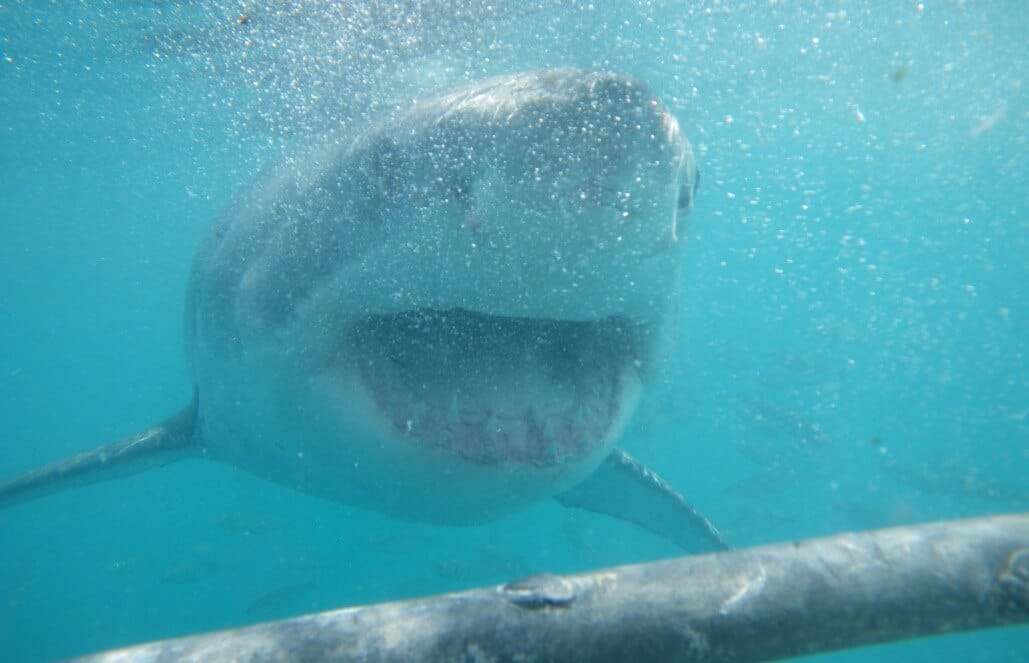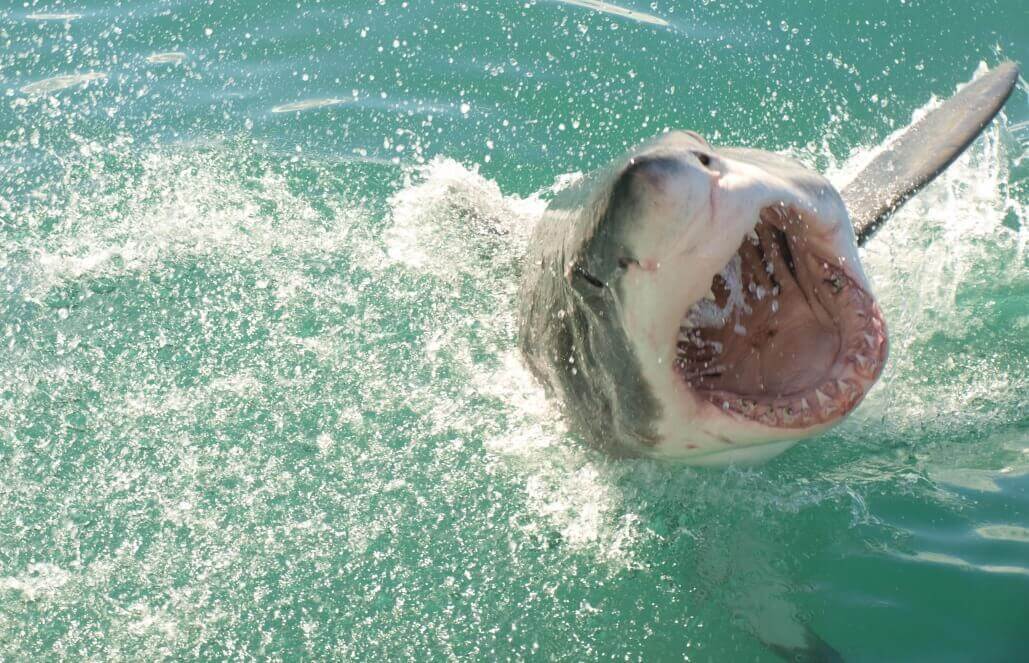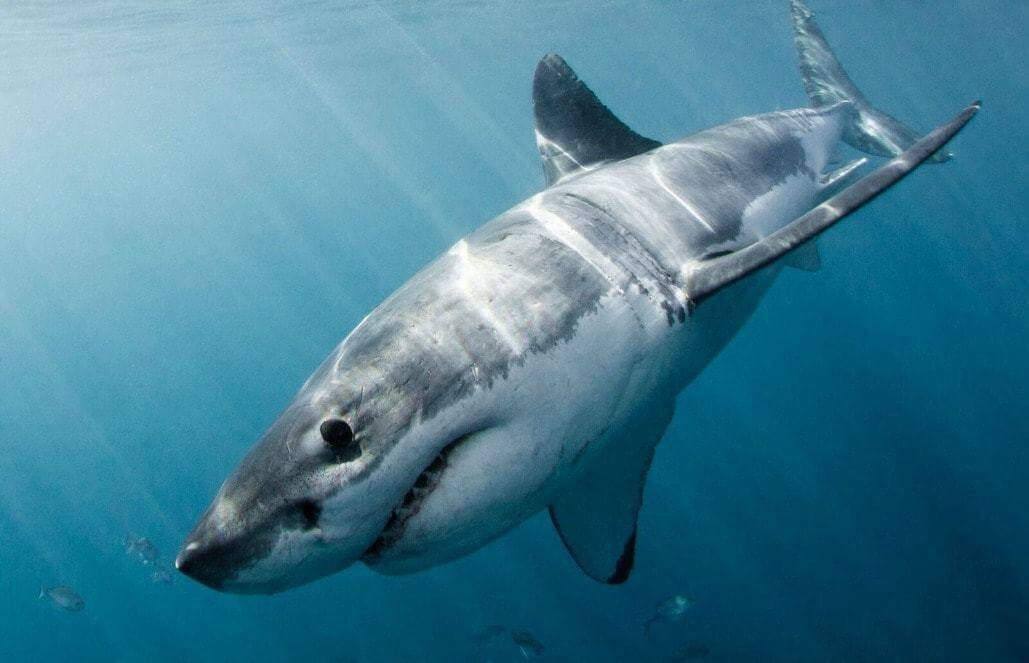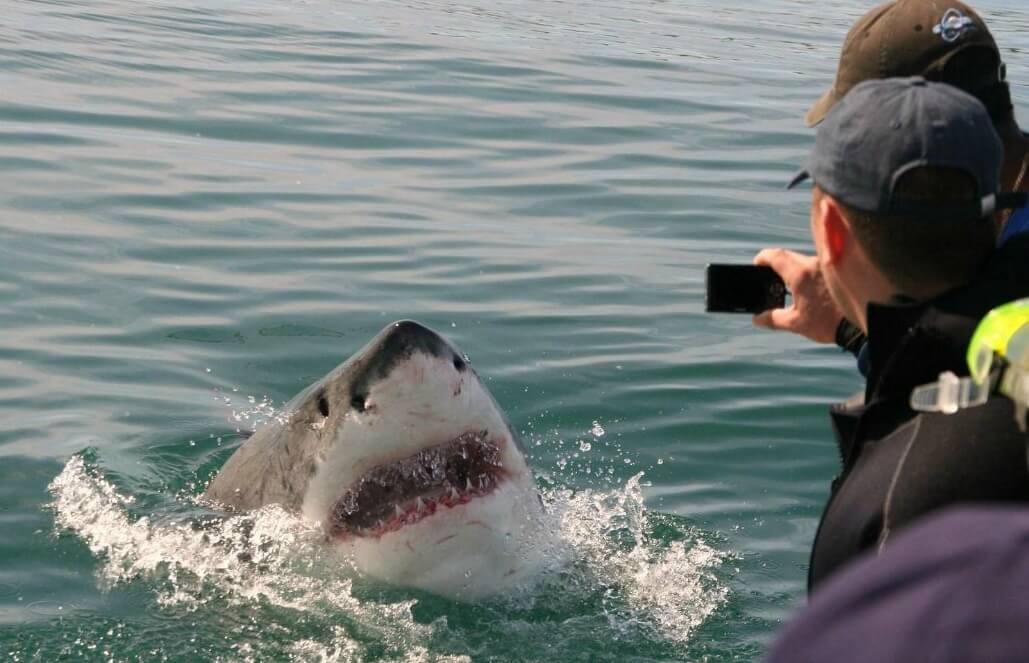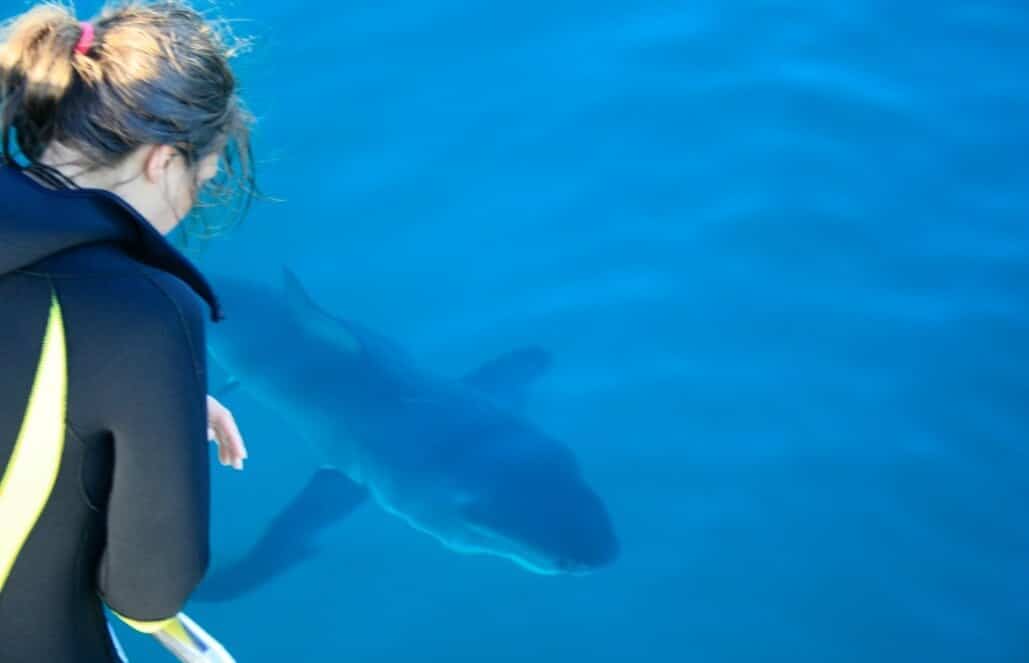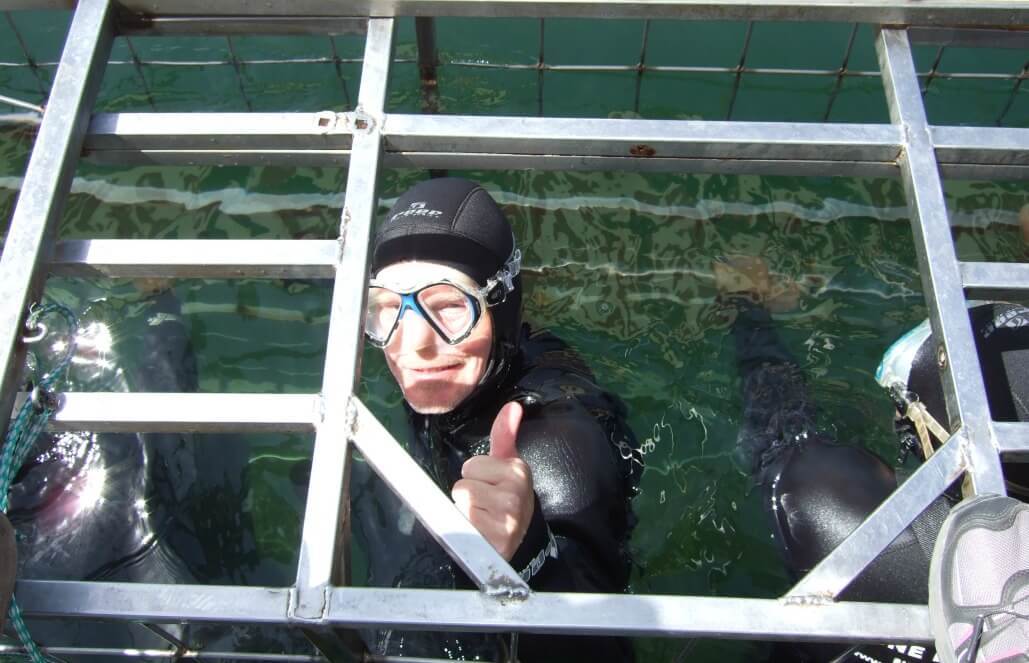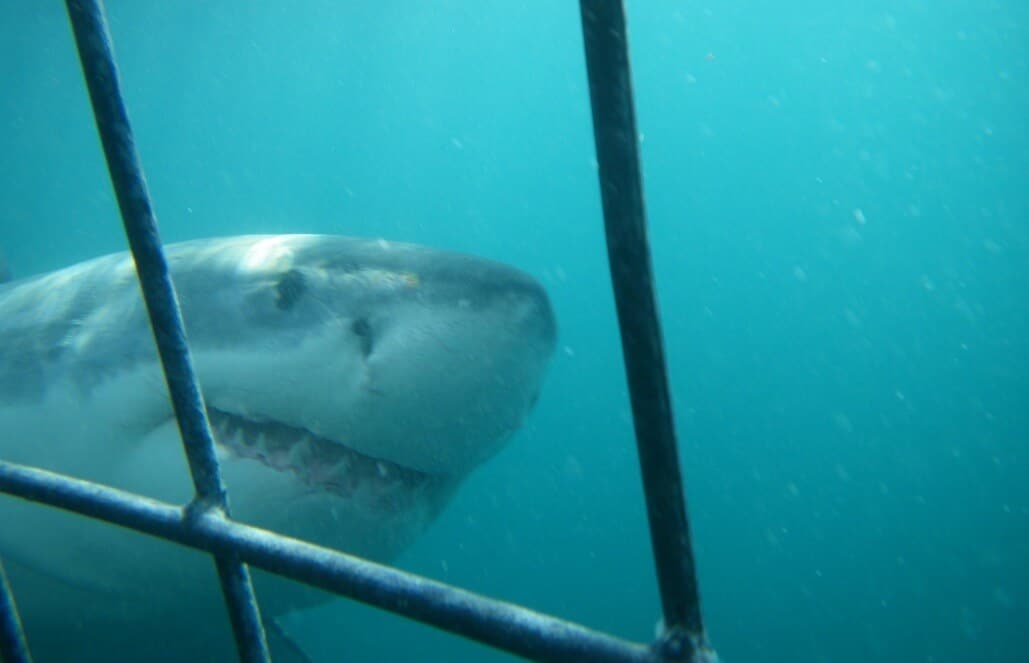Monsters of the deep, or misunderstood, curious fish? Hollywood would have the world believe that great whites are man-eating beasts, but the reality is much more complex. These massive creatures are crucial for the health of the oceans, vulnerable to many conservation threats, and also have many fascinating traits.
Here are 10 great white shark:
1. Great whites speak through body language
Sharks can’t make any noise, so they use body language to communicate. Opening their jaws, nodding their heads, and arching their bodies can be social signals as two sharks ‘talk’ to each other. For example, when two sharks are after the same prey, they will put on a slapping display to deter the other. This communication is vital – where possible, great whites try to avoid fights as a single bite can be crippling.
2. They swim massive distances
South Africa’s great white sharks migrate seasonally. Some swim all the way from South Africa to Australia and back. In other parts of the world, great whites swim across the Atlantic, or from the California coast out into the middle of the Pacific Swimming thousands of miles is standard for many great whites. Prey is scarce on these long ocean journeys though, so the sharks rely on fat stored in their livers to survive.
3. Great whites have warm blood (almost)
Compared to other sharks, great whites maintain high body temperatures. Their powerful muscles create heat when they contract, warming their blood and sustaining a core temperature as high as 25 degrees. This means that unlike many other species of sharks – which can’t regulate their body temperature – great whites can swim in frigid water. Warmer blood also means muscles work more effectively, which helps great whites swim further and faster.
4. Great white sharks help keep the ocean healthy
As apex predators, sharks play an important role in regulating the health of coral reefs and other ocean environments, according to Oceana. Great whites control the number of other predatory fish in the areas they patrol, maintaining balance in the food chain. As the number of great whites and other sharks declines, there is a ripple-on effect. Mid-level predatory fish populations surge, which impacts the number of herbivorous fish, resulting in an increase in algae. For healthy oceans, shark conservation is crucial.
5. It’s impossible to keep great whites in captivity
Every single great white shark that has been captured and put in an aquarium has either died or needed to be released after a short time. The reasons for this are varied – they need to be in constant motion to breathe through their gills, and aquariums aren’t large enough for this. They also require a huge amount of food and have a tendency to swim into glass and prey on other aquarium fish. As captivity isn’t an option, South Africa shark diving is one of the few opportunities people have to study these great fish.
6. Orcas hunt great whites
They might be apex predators but they’re not immune to attacks from other sea dwellers.
Orcas are known to attack and kill great whites. Between May and July 2017, four great white sharks washed up on South African beaches. In a grotesque twist, they were all missing their livers. The deaths were all attributed to killer whales, who probably ate the sharks’ livers for the high fat and nutrients content.
7. Great whites seperate immediately from their mother at birth
No one has ever observed great whites giving birth. However, researchers understand that when the pups are born, they immediately swim away from their mother. It’s thought that this is to prevent the mother eating her young. An absence of motherhood means the young sharks are born fully prepared to take care of themselves. Newborn pups are 4-5 feet long and shortly after being born, they will start hunting small marine animals.
8. No one really knows the great white’s life story
Despite their fame, great white sharks are mysterious creatures. Little is known about their behavior or biology. More research is crucial for understanding these marine animals and helping to protect them. Gansbaai South Africa is an important location for great white research. Eco-tourism activities in Gansbaai, such as great white shark cage diving, contributing to valuable bodies of research and enabling shark protection projects. International volunteers are welcomed on these projects, exchanging hard work for unforgettable shark encounters and the knowledge that they have helped to safeguard a magnificent creature.
9. Great white sharks bite out of curiosity
Great whites are responsible for the largest number of unprovoked attacks on humans.
The reason? Great whites don’t attack humans because they’re hunting them, but out of curiosity. They are very curious creatures and their method of investigating something – whether a crab pot or a human on a surfboard – is to take a bite as a way of collecting tactile evidence. This explains why in most attacks on humans, great whites just take one bite then swim away. Unfortunately this curiosity has given them a bad reputation. While the victim survives in roughly three quarters of great white shark attacks, popular culture has spread a deeply rooted fear of great whites.
10. Great white sharks are classed as a vulnerable species
That’s only one step before endangered. After years of being hunted as trophies, prized for their fins and teeth, great white shark numbers are declining. These sharks are often also caught and killed as a byproduct of the commercial fishing industry. A slow reproductive cycle means that shark numbers take a long time to recover. If current shark conservation threats are not addressed, great whites might end up being pushed right to the brink.
What can you do to help protect great white sharks in South Africa?
Now that you know how unique and interesting great whites are, you may be inspired to lend a hand in shark protection. Supporting their conservation is instrumental in caring for the oceans as a whole. Volunteering with South Africa’s great white sharks is a fantastic way to learn more about some of the most interesting creatures in the ocean.
Our great white conservation project is devoted to both raising awareness of the importance of the sharks, while helping marine biologists to carry out important research. Touching on everything from community development, to marine conservation, and the adventure of cage diving, this is the ultimate volunteer experience for anyone passionate about travelling sustainably and discovering more about South Africa’s fascinating wildlife.
Get thrills and the reward of contributing to conservation at the same time. Get in touch with us or browse more South African marine volunteer programs.


